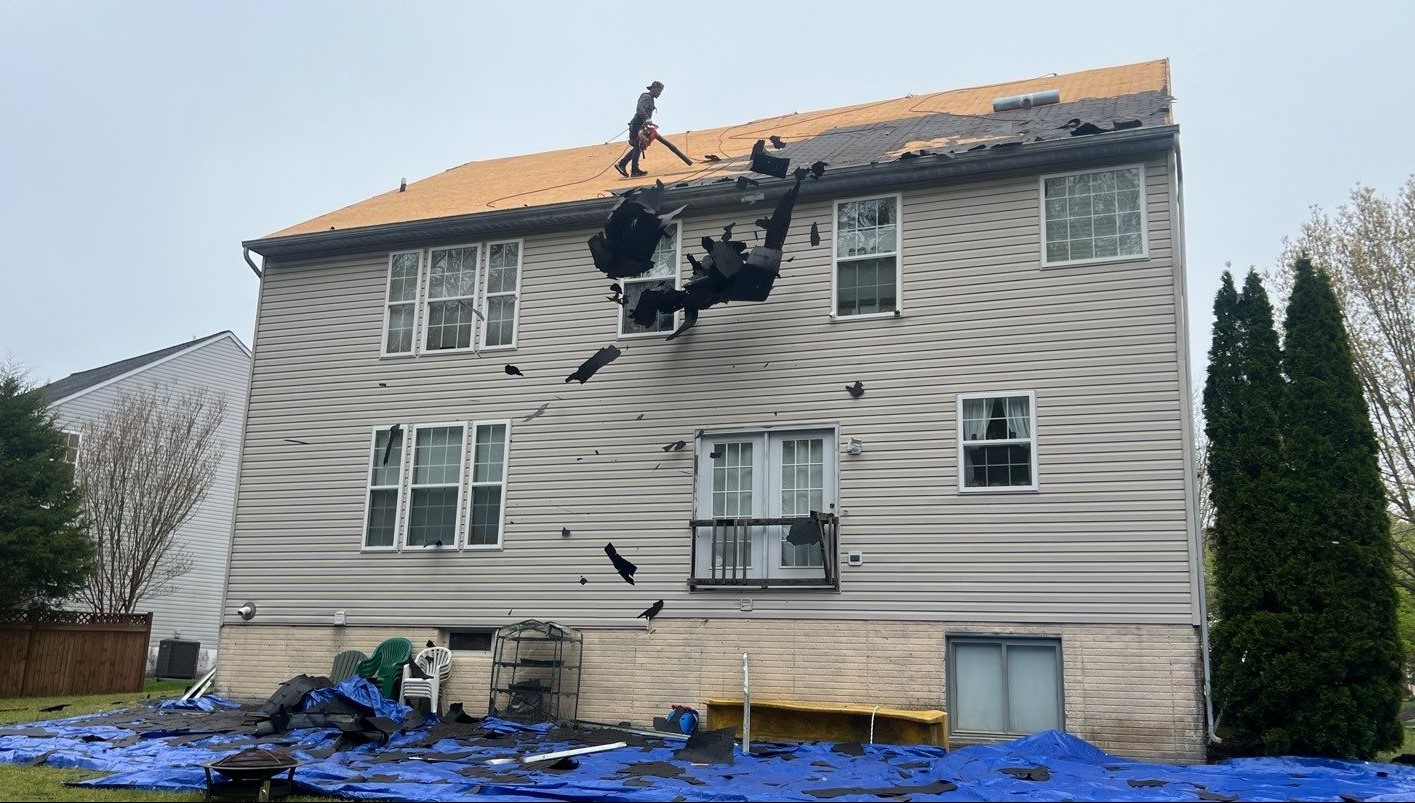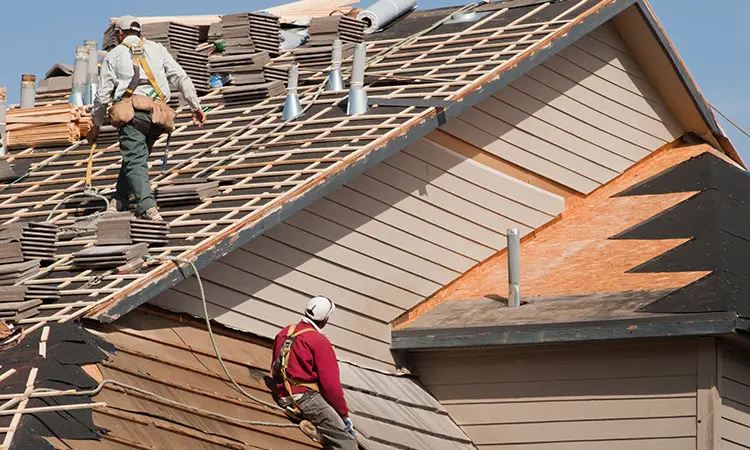Roofing Oahu: Quality Providers for Resilient Roofs in Oahu
Wiki Article
Comprehending the Different Types of Roofings: A Comprehensive Guide for Homeowners
In the realm of homeownership, picking the appropriate roof covering design is a decision that carries considerable effects for both capability and aesthetic charm. With a variety of alternatives-- varying from the typical gable to the contemporary level-- each type offers one-of-a-kind benefits and challenges that need to align with the homeowner's ecological considerations and specific requirements. Recognizing these differences not just help in making an enlightened option yet also influences long-lasting upkeep and power efficiency. As we explore the details of numerous roof covering types, it becomes obvious that size does not fit all; the right option might amaze you.Saddleback Roof
Gable roofings, defined by their triangular form, are amongst the most popular roofing styles as a result of their simplicity and effectiveness in losing water and snow. This style features two sloping sides that fulfill at a ridge, enabling for reliable water drainage and reducing the risk of water buildup. The steep pitch commonly related to gable roofing systems boosts their capacity to take care of heavy rainfall, making them ideal for different climates.Along with their functional advantages, gable roofing systems provide visual versatility. They can be adjusted to different building styles, from conventional to modern-day homes. The layout can additionally suit added functions such as dormer windows, which improve all-natural light and air flow in the attic room area.
In addition, saddleback roofs offer adequate space for insulation, adding to power performance. Homeowners can choose from a range of roof covering products, consisting of asphalt tiles, metal, and tiles, better improving personalization options.
In spite of their advantages, saddleback roofs may require added assistance in areas vulnerable to high winds or heavy snowfall. Overall, the gable roof stays a preferred option because of its blend of functionality, durability, and aesthetic allure.
Apartment Roofs
Flat roofing systems are frequently recognized for their minimal layout and functional applications, particularly in business and industrial setups (oahu roofing). These roofings include a virtually horizontal or horizontal surface area, which enables simple building and construction and functional space application. While they might do not have the visual appeal of pitched roofings, level roofing systems offer numerous benefits, particularly in metropolitan environments where making best use of room is essentialOne of the main advantages of level roofing systems is their access. Homeowners can use the roof covering space for various objectives, such as rooftop gardens, terraces, or solar panel installations. Furthermore, flat roofing systems are commonly a lot more economical to keep and install compared to their sloped counterparts, as they need less products and labor.
Nevertheless, flat roofing systems do present specific difficulties. Appropriate water drainage is necessary to prevent water merging, which can lead to leakages and architectural damages. Therefore, selecting top quality waterproofing materials and regular evaluations are essential for making sure durability. Common materials made use of for flat roofings include built-up roof (BUR), changed bitumen, and single-ply membranes, each offering distinct advantages. On the whole, flat roofings function as a useful and versatile choice for lots of house owners and businesses alike.
Hip Roofing Systems
Hip roofings are identified by their sloped sides that assemble on top, developing a ridge. This style stands out from gable roofs, as all 4 sides of a hip roof incline downwards towards the walls, offering a more steady framework. The angle of the inclines can vary, allowing for convenience in architectural aesthetics and functionality.Among the main benefits of hip roofing systems is their capacity to withstand heavy winds and damaging click for source weather. The sloped surface areas enable far better water drainage, lowering the risk of leaks and water damage. Furthermore, hip roofings use raised attic room, which can be utilized for storage space or perhaps exchanged habitable locations.
Nonetheless, building a hip roofing can be a lot more intricate and expensive than less complex roofing types, such as gable roofings. The extra product and labor associated with creating the slopes and making sure correct structural stability can bring about higher expenditures. Despite these downsides, many property owners favor hip roofing systems for their resilience, aesthetic appeal, and potential for power performance.
Mansard Roofing Systems
Mansard roofings, usually acknowledged by their one-of-a-kind four-sided design, feature 2 inclines on each side, with the lower slope being steeper than the upper. This building design, stemming from France in the 17th century, is not just visually appealing but functional, as it makes the most of the useful area in the upper floorings of a structure. The steep reduced slope enables more headroom, making it a perfect option for loft spaces or attics, which can be exchanged living areas.Mansard roofs are characterized by their flexibility, suiting numerous architectural designs, from typical to contemporary. They can be built with various materials, consisting of asphalt tiles, slate, or metal, providing home owners with a range of choices to fit their spending plans and choices. Furthermore, the design enables the combination of dormer home windows, improving all-natural light and air flow in the top degrees.
Nonetheless, it is important to take into consideration the prospective downsides. Mansard roofings may call for even more upkeep due to the complexity of their style, and their high inclines can be challenging for snow and rainfall overflow. In general, mansard roofing systems incorporate beauty with usefulness, making go to the website them a popular option amongst house owners looking for unique building attributes.
Dropped Roofs
As homeowners progressively seek simpleness and capability in their architectural styles, lost roof coverings have actually arised as a popular option. Identified by a single sloping plane, a shed roofing system presents a minimal visual that enhances different home styles, from contemporary to rustic.One of the primary benefits of a shed roof is its uncomplicated building and construction, which usually equates to decrease labor and product costs. This style allows for reliable water drain, lowering the danger of leakages and water damage. Additionally, the upright slope supplies ample space for skylights, improving all-natural light within the interior.
Shed roofs likewise use flexibility in terms of usage. They can be efficiently integrated right into enhancements, garages, or exterior structures like sheds and pavilions. Moreover, this roof design can accommodate various roof covering materials, consisting of metal, asphalt shingles, or perhaps eco-friendly roof coverings, straightening with green campaigns.
However, it is vital to think about local climate problems, as hefty snow tons may necessitate modifications to the roof's angle or framework. In general, dropped roofs provide a functional and visually pleasing alternative for homeowners aiming to make best use of functionality without endangering style.
Conclusion


Gable roofs, characterized by their triangular shape, are among the most prominent roof covering styles due to their simpleness and performance in dropping water and snow. oahu roofing. The steep pitch typically connected with gable roofings improves their capacity to take care of heavy precipitation, making them suitable for numerous environments
While they may lack the visual appeal of pitched roofs, level roof coverings offer many benefits, hop over to these guys especially in urban atmospheres where making best use of room is essential.

Report this wiki page